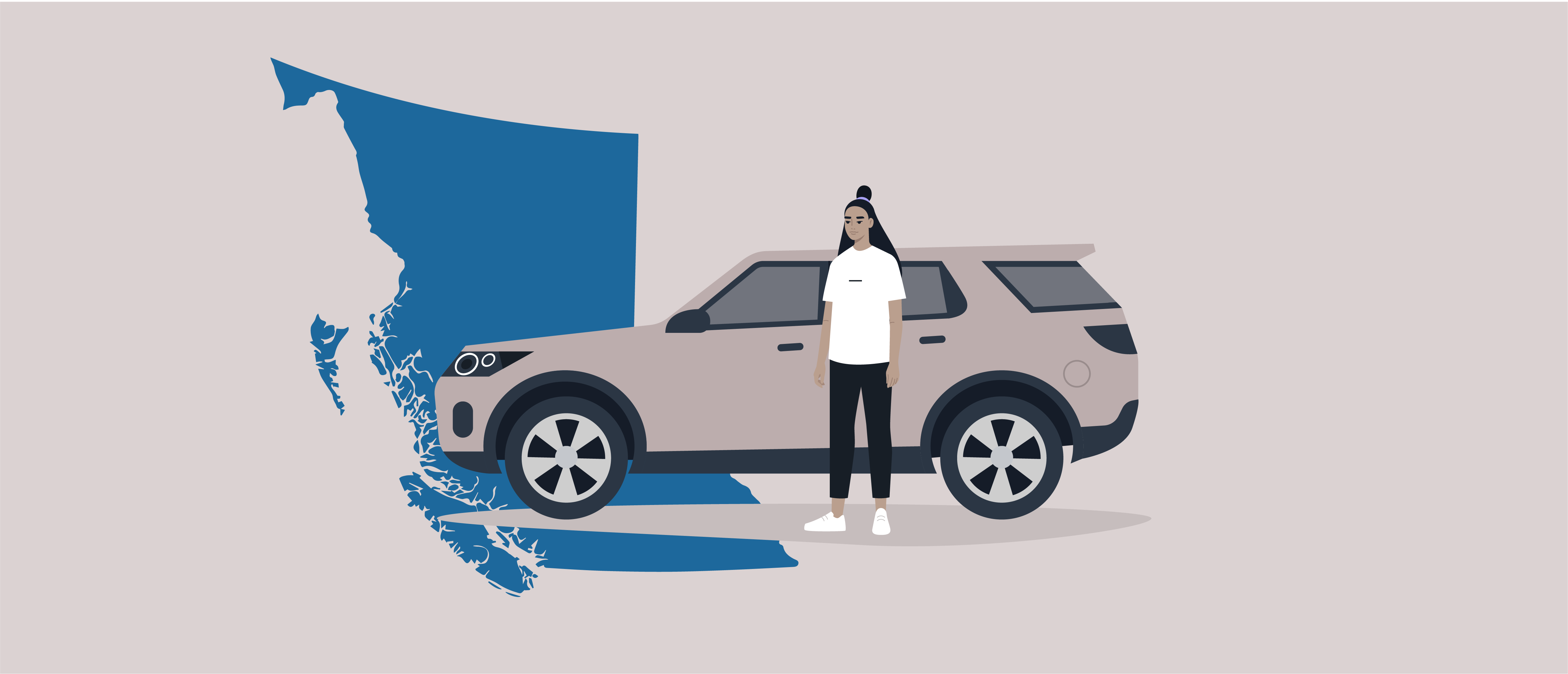Car insurance can be a complex topic, especially if you’re new to car insurance in Canada. It’s important to have a clear understanding of what car insurance is, the coverage options available to you, and how to obtain it. In this comprehensive guide, we’ll explore the fundamentals of car insurance in Canada, including the mandatory coverage required by law and the additional options you can consider for enhanced protection. Whether you’re a first-time car owner or a seasoned driver, this article will provide you with the information you need to navigate the world of car insurance confidently.
What is Car Insurance and Why is it Necessary?
Car insurance is a mandatory form of protection that you need to purchase to safeguard yourself from financial loss resulting from potential accidents. It serves as a safety net, providing coverage for damages to other individuals or their vehicles if you’re held responsible for an accident. Additionally, car insurance can also protect you from having to bear the costs of repairing your own vehicle in the event of an at-fault accident. By entering into a contract with an insurance provider, you become responsible for paying a premium to keep your car insurance policy active and ready to respond in case of any unforeseen incidents.
In Canada, car insurance follows the vehicle rather than the driver. This means that if you plan to drive a car, it must be insured properly to comply with legal requirements. However, if you frequently drive someone else’s car and do not have your own vehicle, you may need to be added to that person’s car insurance policy to ensure adequate protection. On the other hand, if you own or lease a car, it is essential to purchase a car insurance policy for your specific vehicle before hitting the road.
Understanding the Different Types of Car Insurance in Canada

Car insurance regulations vary across provinces in Canada, and the industry is divided into public insurance and private insurance systems. While some provinces operate solely on one system, others have a hybrid model that combines elements of both. To better grasp the landscape of car insurance in Canada, let’s explore the concepts of public and private car insurance.
Public Car Insurance
In provinces where public car insurance is in place, the insurance provider for your vehicle and other drivers in the province is a government-owned corporation. In some cases, you may have the option to augment your coverage with a privately-owned, publicly traded, or mutual insurance company. Public car insurance ensures a basic level of coverage for all drivers, with additional options available from private insurers to enhance protection.
Private Car Insurance
Private car insurance, as the name implies, involves insurance companies that are privately owned, publicly traded, or mutual companies. These companies offer coverage to drivers in their respective provinces. Private car insurance provides a range of coverage options and allows drivers to tailor their policies to suit their specific needs.
To provide a clearer picture, let’s examine the provinces that offer public and private car insurance:
-
Public Car Insurance: British Columbia, Saskatchewan, Manitoba
-
Private Car Insurance: All other provinces and territories except Quebec
In Quebec, a hybrid model is employed, where the public insurer manages bodily injury insurance, while private insurers provide coverage for other aspects, such as civil liability, collision, and comprehensive insurance.
Mandatory Car Insurance Coverage in Canada
Car insurance in Canada consists of both mandatory and optional coverages. Mandatory coverage is required by law and varies from province to province. It ensures that all drivers have a basic level of protection. Let’s delve into the mandatory coverage options typically included in car insurance policies:
1. Liability Coverage
Liability coverage is a fundamental component of car insurance. It provides financial protection if you injure someone or damage their property and are sued for damages. In the event of an accident where you are deemed responsible, liability coverage can cover the cost of the damages incurred.
2. Accident Benefits
Accident benefits provide coverage for medical expenses and other benefits if you sustain injuries in a car accident, regardless of who is at fault. This coverage ensures that you have access to the necessary medical treatment and support during your recovery.
3. Direct Compensation
Direct compensation coverage applies in situations where your vehicle sustains damage and you are not at fault for the accident. Under this coverage, your insurer is responsible for covering the damages to your car. However, it’s important to note that direct compensation coverage may not be mandatory in all provinces.
4. Uninsured Automobile Coverage
Uninsured automobile coverage protects you if you are involved in an accident caused by an uninsured driver. It covers medical costs and damage to your vehicle that may result from such an incident.
Enhanced/Optional Car Insurance Coverage

In addition to the mandatory coverage outlined above, car insurance policies in Canada offer optional coverages that drivers can add to their policies for enhanced protection. These additional coverages provide added peace of mind and can be tailored to meet your specific needs. Here are some common enhanced or optional coverage options available:
1. Specified Perils
Specified perils coverage protects your vehicle from specific risks, such as damage caused by fire, floods, hailstorms, or theft. This coverage provides financial assistance to repair or replace your vehicle if it is damaged or stolen due to these specified perils.
2. Comprehensive Coverage
Comprehensive coverage offers protection against a wide range of risks and damages that are not covered by collision or upset coverage. It covers damages to your vehicle caused by events such as vandalism, falling objects, or natural disasters.
3. Collision or Upset Coverage
Collision or upset coverage provides financial protection for damages to your vehicle resulting from a collision with another vehicle or object. Whether you collide with another car or hit a stationary object, this coverage ensures that you are covered for the necessary repairs or replacement of your vehicle.
4. All Perils Coverage
All perils coverage combines the benefits of collision or upset coverage and comprehensive coverage. With this option, you have comprehensive protection against a wide range of risks, including collision, upset, theft, and other specified perils.
How to Obtain Car Insurance in Canada
Getting car insurance in Canada is a relatively straightforward process. For private car insurance, most insurance providers offer online quotes, making it convenient and efficient for you to obtain a quote in minutes. With TD Insurance, for example, you can easily get an online quote and choose to complete your purchase online or speak with a licensed advisor over the phone. The process is designed to be quick, easy, and accessible, ensuring that you have the necessary coverage before you hit the road.
For public car insurance, it is advisable to contact the government-owned corporation that manages car insurance in your province. They will provide you with accurate and up-to-date information on how to obtain the right car insurance to meet your needs.
Factors Affecting Car Insurance Premiums

Car insurance premiums are determined by various factors, including the type of car you drive, your driving record, and the coverage options you select. Insurance providers assess these factors to calculate the level of risk associated with insuring you and your vehicle. Here are some key factors that influence car insurance premiums:
1. Type of Car
The make, model, and year of your car play a significant role in determining your insurance premium. Generally, high-performance or luxury vehicles have higher premiums due to their higher repair and replacement costs.
2. Driving Record
Your driving record is an essential factor considered by insurance providers. A clean driving record with no accidents or traffic violations indicates that you are a low-risk driver, which can result in lower premiums. Conversely, a history of accidents or traffic violations may lead to higher premiums.
3. Coverage Options
The coverage options you choose, including the deductibles and limits, can affect your insurance premiums. Higher deductibles and increased coverage limits typically result in higher premiums, while lower deductibles and more modest coverage limits may lead to lower premiums.
4. Location
The area where you live and primarily drive your car can impact your insurance premiums. Urban areas with higher population densities and higher rates of accidents or theft may have higher premiums compared to rural areas.
5. Age and Gender
Younger drivers, particularly those under 25, are generally considered higher risk due to their limited driving experience. Consequently, insurance premiums for young drivers tend to be higher. Additionally, gender can also impact premiums, with males often paying higher rates than females due to statistical risk factors.
Tips for Saving on Car Insurance in Canada

Car insurance premiums can be a significant expense, but there are several strategies you can employ to save on your insurance costs. Consider the following tips to help reduce your car insurance premiums:
-
Bundle Your Policies: Many insurance providers offer discounts when you bundle your car insurance with other policies, such as home insurance. Combining your policies can lead to substantial savings.
-
Explore Discounts: Insurance companies often offer various discounts based on factors like your driving record, vehicle safety features, or being a member of certain organizations. Take advantage of these discounts to reduce your premiums.
-
Maintain a Good Driving Record: A clean driving record can have a positive impact on your insurance premiums. Obey traffic laws, avoid accidents, and practice safe driving habits to maintain a good driving record.
-
Consider Increasing Deductibles: By opting for higher deductibles, you can lower your insurance premiums. However, it’s important to ensure that you can comfortably afford the deductible amount in the event of a claim.
-
Take Driver Education Courses: Completing recognized driver education courses can demonstrate your commitment to safe driving, potentially resulting in lower premiums.
-
Shop Around for the Best Rates: Insurance premiums can vary significantly across providers, so it’s essential to compare quotes from multiple insurers. Take the time to research and obtain quotes to find the best rates for your needs.
By implementing these money-saving strategies, you can effectively reduce your car insurance premiums while still maintaining the necessary coverage for your vehicle.
Conclusion
Car insurance is a vital aspect of car ownership in Canada. It provides essential protection against financial loss resulting from accidents, injuries, or property damage. Understanding the basics of car insurance, including the mandatory coverage required by law and the optional coverages available, is crucial for every driver. By obtaining the right car insurance policy and considering ways to save on premiums, you can ensure that you are adequately protected on the roads while keeping costs in check. Remember to research and compare insurance providers to find the best coverage and rates for your specific needs. Stay informed and drive safely!
